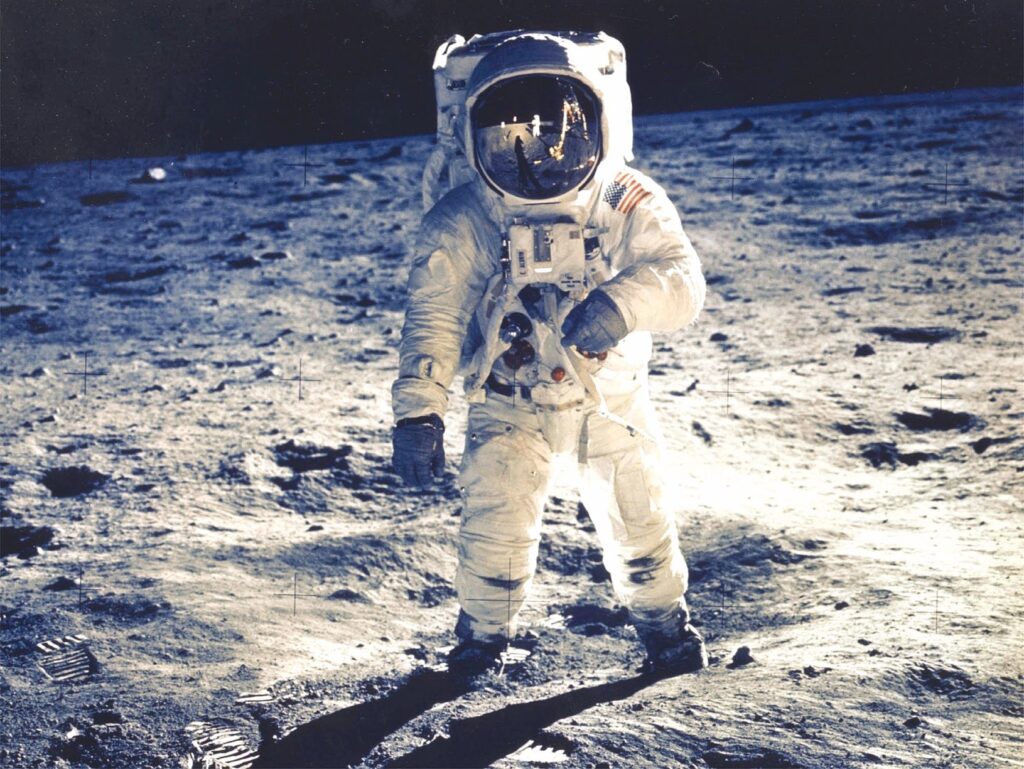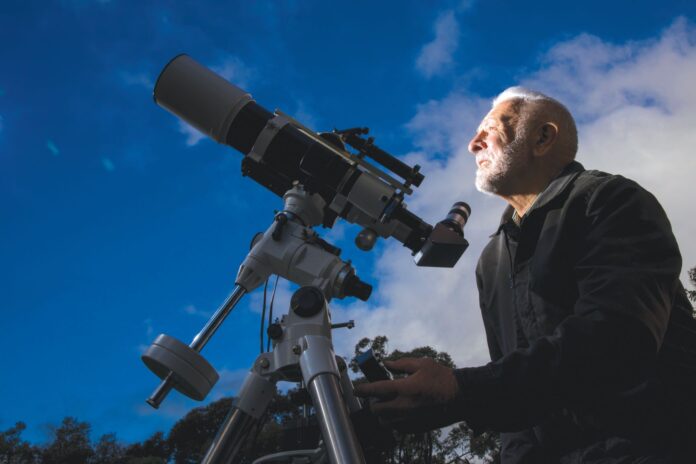An almost impossible-to-discern picture of a man on a ladder.
Those immortal words: “That’s one small step for man, one giant leap for mankind.”
On 21 July 1969, the USA won the space race with Russia as Apollo 11 commander Neil Armstrong became the first human to set foot on the moon.
It was a moment Astronomical Society of the Hunter president Col Maybury would never forget.
He had been watching the coverage on a poor-quality black-and-white television with his father, Jim, in Abermain when the picture suddenly improved.
“As we are now aware, the first TV of a man on the moon was captured by The Dish at Parkes,” he tells Newcastle Weekly ahead of the 50th anniversary this month.
“It was the only high gain radio antenna on this side of the earth that could lower far enough to pick up signals from a spacecraft just on the horizon in the moon’s orbit around the earth and the earth’s rotation.”
Mr Maybury turned to his father, who was born in 1902, a year prior to the first successful powered aircraft flight by the Wright brothers at Kitty Hawk, North Carolina.

Sixty-seven years later, he saw men on the moon.
“Six hundred million people watched it,” Mr Maybury said.
“My father – fancy being born before man flew 120 metres and then to see them again walking on the moon, some 380,000 kilometres away.”
Mr Maybury followed the space race from the start.
He watched Sputnik 1 – the first satellite launched in space by the Soviet Union – fly over in 1957 from his vantage point in Melbourne.
“One of the big things in my life was watching the Sputnik; I was at the School of Signals doing an advanced course and we’d gathered on Survey Hill to see it.
“From way down south, in the Antarctic, up came this little tiny star that floated across.
“In that crowd, there was a stunned silence as it went over.”
The Soviet Union then sent the first human to space – Yuri Gagarin – in 1961.
As the rivalry intensified, American president John F Kennedy pledged that the country would put a man on the moon and return him safety to earth before the end of the decade.
Mr Maybury believes it is the “most amazing thing mankind has ever done”.
“I read the accounts of [Michael] Collins, Aldrin and, of course, Armstrong; all of them gave the impression that they didn’t think they were coming back.
“As one of them said, there were over two million moving parts in the whole of the machinery and, even if they operated at 99.9%, it still left 2,000 opportunities for something to go wrong.”
He said subsequent conspiracy theories of the moon landing, which first emerged in the early 1970s, were wide of the mark.
“When they planted the flag, people said there was wind blowing and the [American] flag was moving,” he said.
“It wasn’t – they had jammed it in and wiggled it and, of course, in low gravity and no atmosphere, the flag flapped.”
Mr Maybury will attend the 50th anniversary celebrations at Parkes on Saturday 20 July.
More stories:







